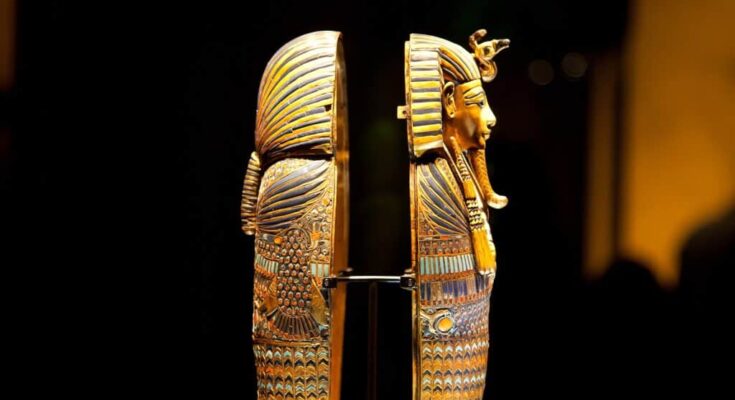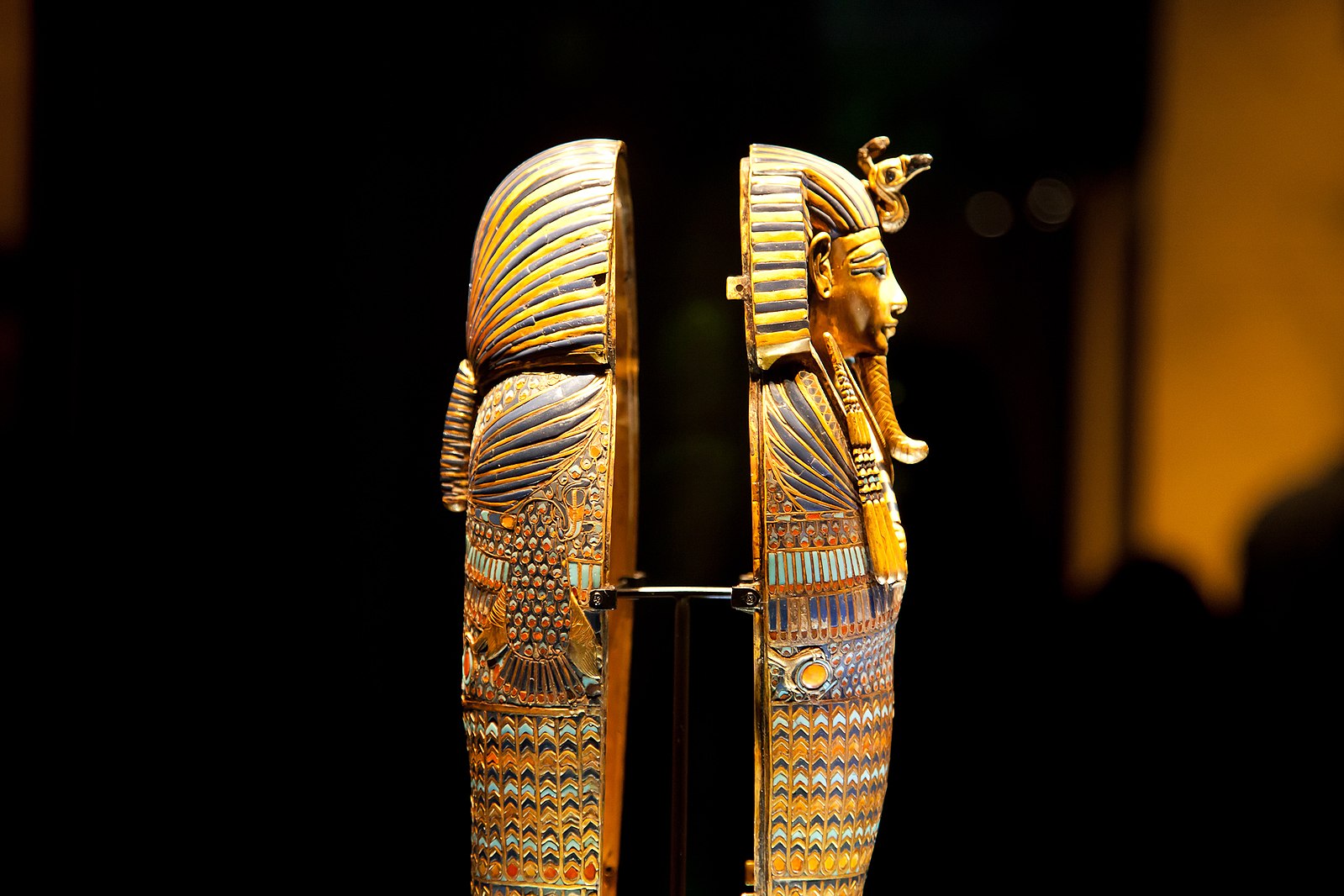
Gold, a timeless symbol of wealth and beauty, has been closely tied to remarkable finds throughout human history. Its enduring appeal is evident in its continued popularity over the centuries.
In the last century, the search for gold was not limited to archaeologists. Ordinary people in their daily lives have stumbled upon extraordinary discoveries related to this precious metal. All of them have had a profound impact on the scientific community and have amazed people from all over the world.
Top 10 Gold treasure discoveries of the Last Century
1. The Large Gilded Coffin of King Tutankhamun
The mummy of king Tutankhamun was laid inside 3 coffins nested within each, with the innermost coffin made of 110.4 kg of solid gold. Collection: Egyptian Museum Cairo. pic.twitter.com/ncUAQbGzTG
— Archaeology & Art (@archaeologyart) August 27, 2023
One of the most striking gold finds is from almost a hundred years ago. It is associated with King Tutankhamun, known as the Golden Pharaoh. He reigned during the 18th Dynasty of the New Kingdom. His untimely death at a young age has captivated the world’s imagination for centuries. His tomb was hidden in the Valley of the Kings on Luxor’s west bank. British archaeologist Howard Carter discovered it in November 1922, capturing worldwide attention.
The innermost part, an awe-inspiring solid gold coffin weighing 243 pounds, cradled the king’s mummy, crowned by the iconic gold mask. The outer coffin, a gilded wooden masterpiece, depicts the king in Osirian form, adorned with blue and red glass accents.
2. Muisca Raft—Symbol of El Dorado
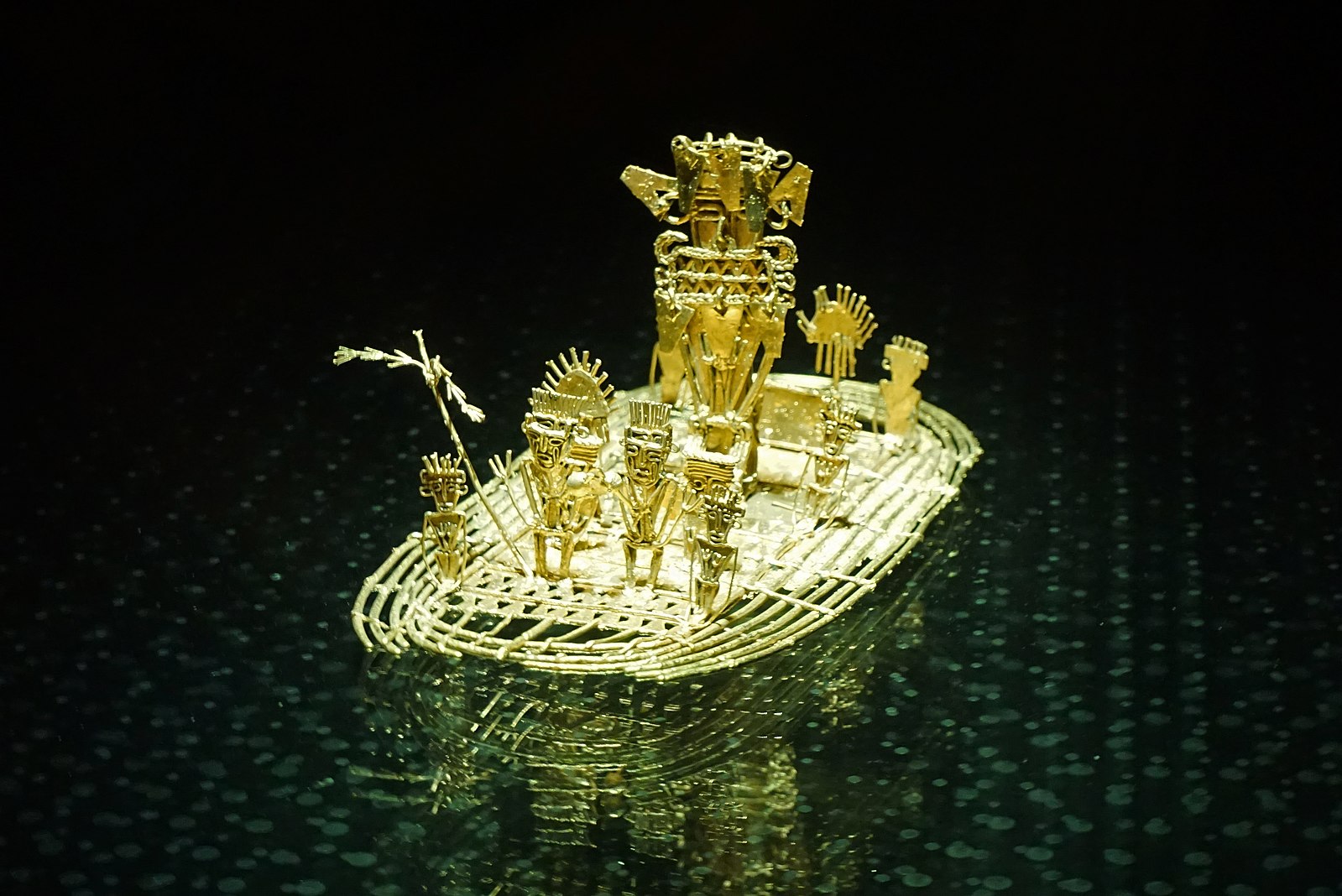
Another significant gold find its roots in an ancient civilization. The Muisca, an advanced civilization from the Colombian Andes, were behind the myth of “El Dorado.” Spanish conquerors sought to exploit their material riches, crafting this legend. The Muisca controlled a vast territory and traded salt for gold, becoming skilled metallurgists with unique alloys and casting techniques.
Their initiation ritual for a new leader involved covering him in gold dust and placing him and his offerings onto a raft on Lake Guatavita. The offerings included emeralds and gold figurines called tunjos and depicted warriors, mothers, and chiefs.
The most famous Muisca artifact, the Muisca Raft, was discovered in Pasca in 1969 by a peasant. It is believed that it depicted the initiation ceremony of a new ruler. Made of tumbaga, an alloy of gold, silver, and copper, it possesses a unique pinkish-yellow glow. The raft’s wooden texture mirrors the ritual description, with the ruler prominently depicted amid smaller figures rowing and wearing masks. The unpolished gold surface and intricate openwork design testify to the advanced artistry of Muisca metalworking.
3. The Panagyurishte Treasure
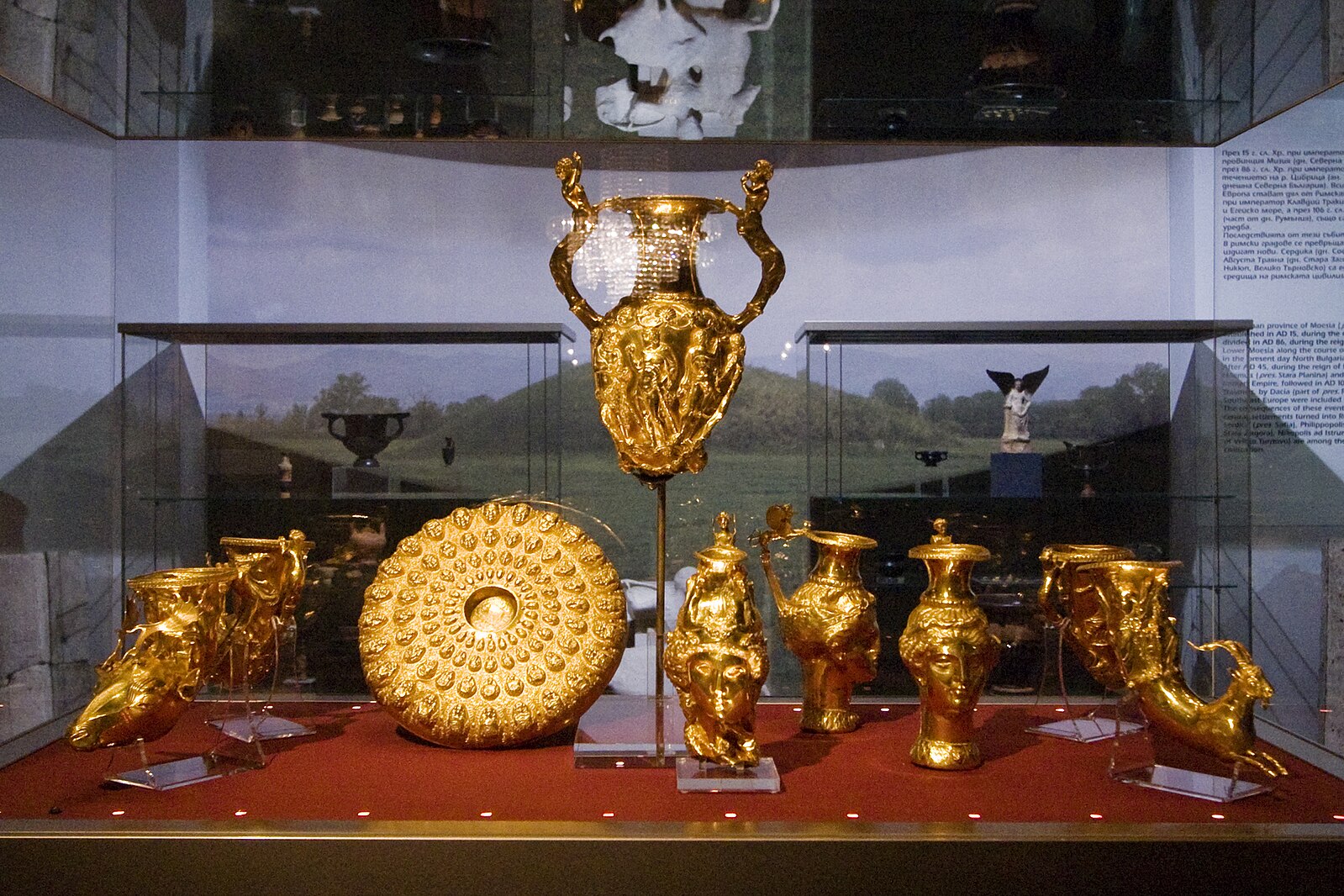
The Panagyurishte Gold Treasure, the most opulent of Thracian treasures, was unearthed in 1949, by three brothers in Panagyurishte of Central Bulgaria. Comprised of nine gold vessels, including a phiale, amphora, and seven rhytons, the treasure weighs more than thirteen pounds in total and is crafted from 23-karat gold. These vessels are intricately adorned with depictions of Thracian myths and customs featuring mythological figures such as Dionysus, Apollo, and Artemis.
Deikov Brothers holding the Panagyurishte Treasure, 1949. The Thracian treasure of Panagyurishte (Panagyurishte, Bulgaria, c. 4th century BC) is one of the most remarkable artifacts of the ancient Thracian civilization. pic.twitter.com/yK7LKav45z
— Archaeology & Art (@archaeologyart) November 13, 2021
Dating back to the 4th to 3rd centuries BC, the treasure is believed to have served as a royal ceremonial set, possibly for a Thracian king. Displayed in various museums worldwide, it is a prominent artifact of Thracian culture. It is also a centerpiece of the Thracian art collection at the National Museum of History in Sofia, Bulgaria.
Another remarkable Thracian find consisting of 165 silver objects, 131 gilded, and weighing over forty-four pounds, showcases scenes from Thracian religion and Greek mythology. These artifacts highlight cultural exchange between the Thracians and Greeks, offering a glimpse into ancient history and Thracian heritage.
4. Pepita Canaa Gold Nugget
' Pepita Canaã' Gold Nugget. 6082,0 gm, found 1983 – Serra Pelada ('Naked Mountain') Gold mine, Brazil pic.twitter.com/gK8niNA0iq
— Feridun Akyol (@FeridunA1) May 16, 2019
The impressive Pepita Canaa was found in Brazil’s Serra Pelada in 1983. This remarkable gold treasure weighed 132 pounds and is now on display in the money museum in Brasilia.
Pepita of Canaan is controversial because it was originally even larger but was broken into pieces during recovery. Despite this, it remains the world’s largest nugget, leading scientists to wonder about its potential size if it had been left intact.
5. Bactrian Gold

In 1978, a Soviet-Afghan archaeological team, led by Greek-Russian archaeologist Viktor Sarianidi, excavated at Tillya Tepe, which translates to “Golden Hill” in Persian. Little did they know how fitting the name would be.
The site was comprised of six burial mounds, one with a man and five with women, likely his wives. The excavation unearthed a staggering 20,600 items, including coins, gold, silver, ivory, and precious stones. These artifacts, dating between 100 BC and 100 AD, included necklaces, belts, medallions, and even a crown.
6. The Hand of Faith
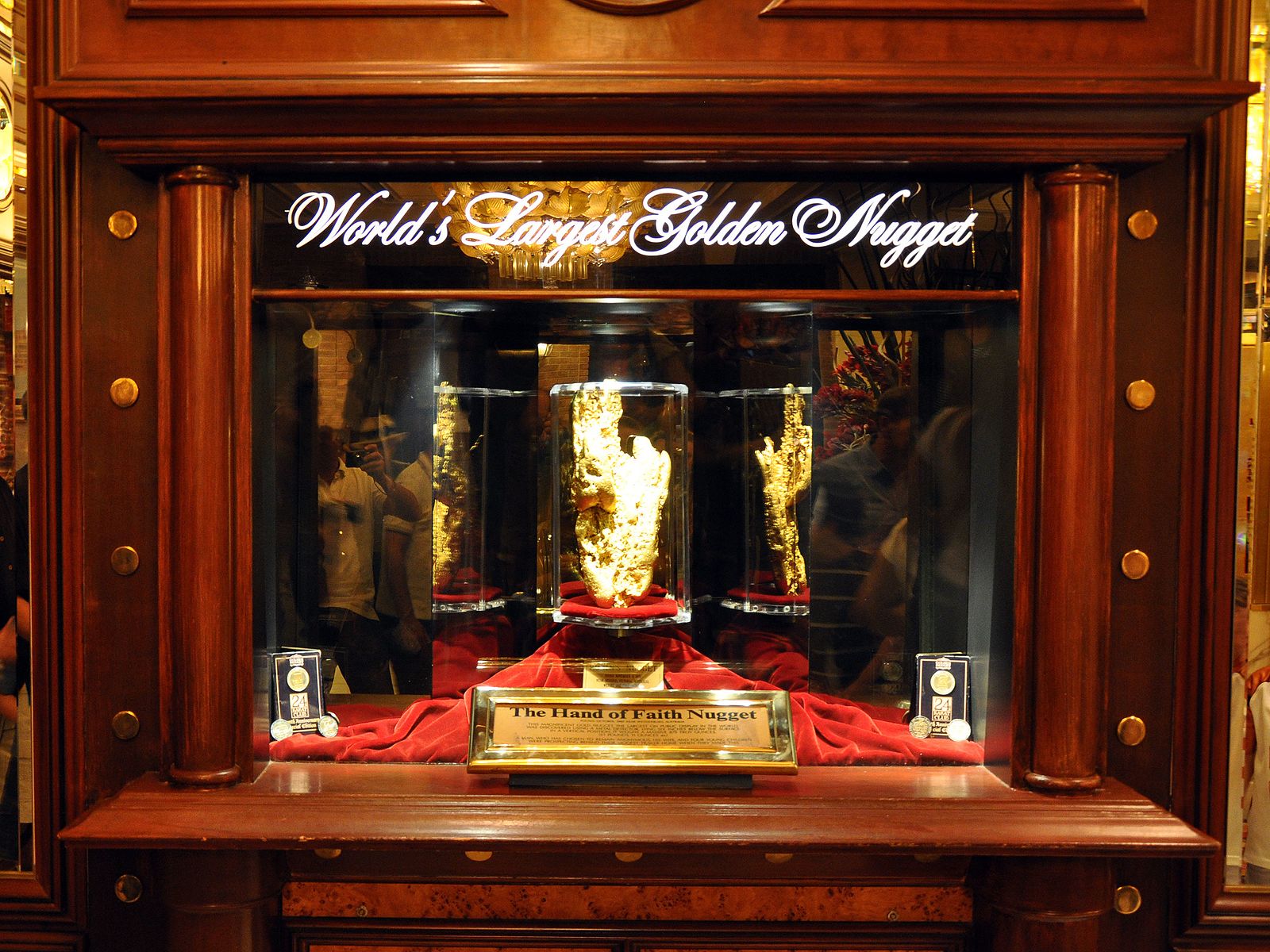
Known as the Hand of Faith, this gold nugget earned its name due to its distinctive shape. It holds the distinction of being the largest nugget ever discovered through the use of a metal detector. Weighing an impressive 55.9 pounds, it was unearthed by prospector Kevin Hillier in September 1980 in Wedderburn, Victoria, Australia.
Today, the Hand of Faith remains one of the most substantial gold nuggets in existence. Its current home is the lobby of the Golden Nugget Casino in Las Vegas, where it provides a captivating exhibit.
7. Malagana Treasure, Gold Find That Sparked Greed
The Malagana Treasure: Gold and Greed, A Lost Civilization Plundered pic.twitter.com/AHR9zu5I0F
— Ancient Origins (@ancientorigins) July 30, 2022
In 1992, an ordinary sugarcane farm worker in Colombia’s Cauca Valley inadvertently stumbled upon a treasure trove while operating a tractor. The discovery led to a frenzy of looting. Nearly five thousand people descended on the site, unearthing nearly four tons of pre-Columbian artifacts, including a golden mask and jewelry.
Bogota’s Museo del Oro acquired some of these items for their preservation, paying looters nearly three hundred thousand dollars. Sadly, despite preservation efforts, looting at Hacienda Malagana has continued.
8. Staffordshire Anglo-Saxon Gold Hoard
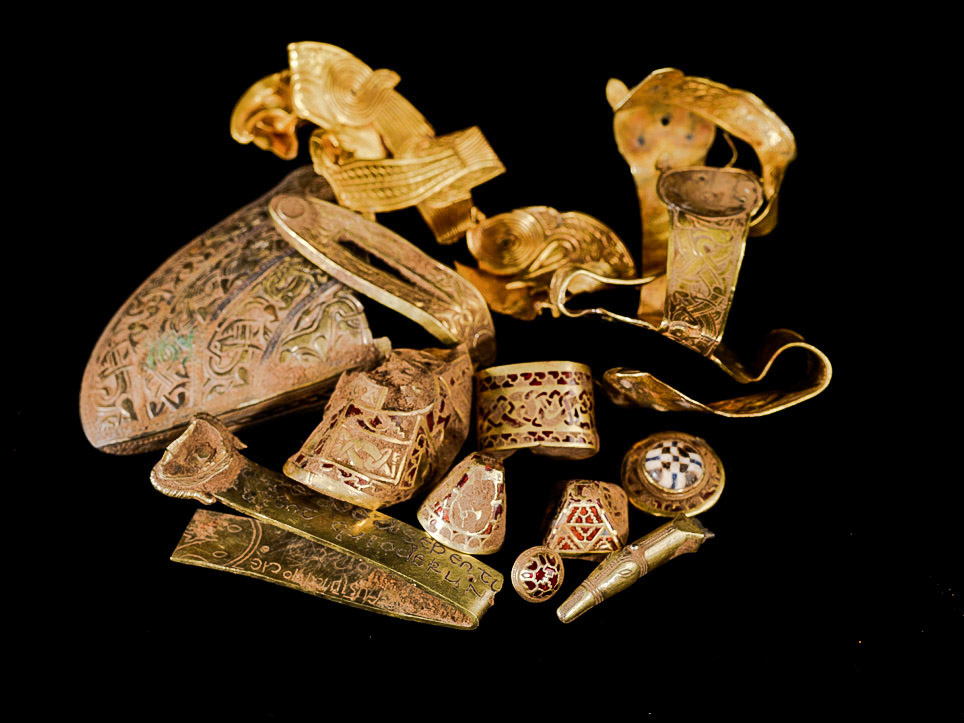
The Staffordshire Hoard is the largest collection of Anglo-Saxon gold and silver ever discovered globally. This gold find is comprised of nearly four thousand objects, primarily war-gear of exceptional craftsmanship.
Metal-detectorist Terry Herbert unearthed the first pieces in 2009. Archaeologists subsequently conducted a four-week excavation, and found all the hoard items near the surface, likely due to erosion caused by plowing. Moreover, additional items were found in 2012 when the field was plowed again.
9. The Hoxne Hoard, Gold Find on the Farm
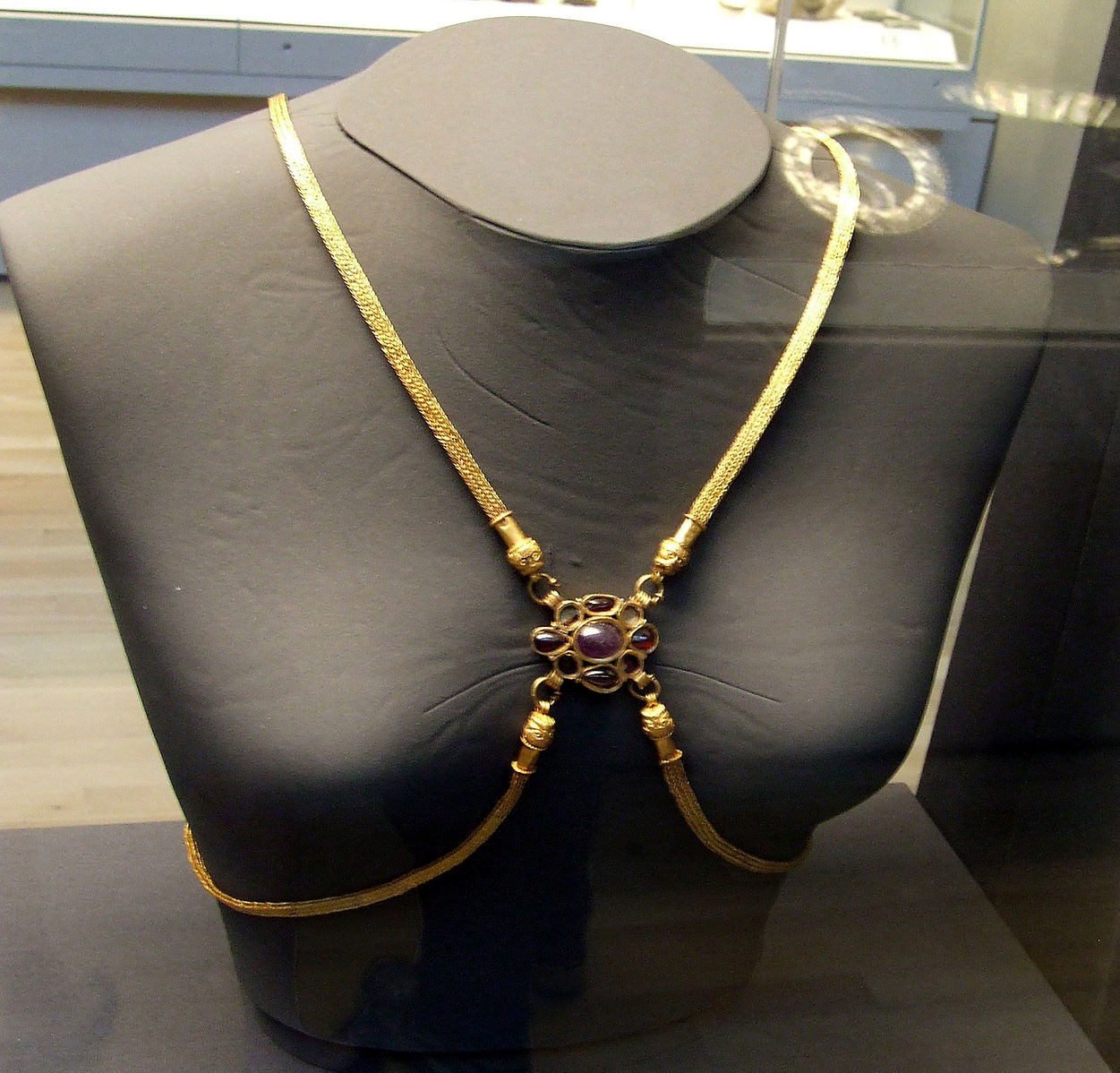
In 1992, a simple mishap led to an astonishing discovery on an English farm. When farmer Peter Whatling lost his hammer, he sought the help of a friend skilled in metal detecting. Little did they know that their search would unearth a remarkable treasure: 14,865 Roman coins, crafted from gold, silver, and bronze. Alongside the coins, the hoard includes a wealth of treasures ranging from silver tableware to intricate gold jewelry.
The Hoxne Hoard stands as the largest collection of a late Roman gold find ever unearthed within the Roman Empire. Located in Suffolk, England, the hoard’s origins date back to the late 4th to early 5th centuries AD. Comprised of 7.7 pounds of gold and 52.4 pounds of silver, it provides invaluable insights into the waning days of Roman rule in Britain. The finder promptly reported the discovery, enabling archaeologists to conduct a meticulous excavation and preserve the hoard, safeguarding both its historical context and condition.
10. Caesarea Sunken Treasure
Diver recounts discovery of rare golden treasure in Caesarea #scuba #treasure #archaeology pic.twitter.com/1d91B2wrDp
— Stephen Burns (@sj17burns) February 23, 2015
In 2015, a fierce storm along Israel’s Mediterranean coast led to an incredible discovery—the Caesarea Sunken Treasure. While scuba diving near the ancient port of Caesarea, an individual by the name of Zvika Fayer spotted gold coins adorned with Arabic script on the seabed.
These dinars offer a glimpse into Caesarea’s history during its time in the Islamic Fatimid Dynasty just before the First Crusade. Caesarea has a rich past, from its origins as a Phoenician and Greek trading post in 400 B.C. to its rule by Queen Cleopatra and Herod the Great.
